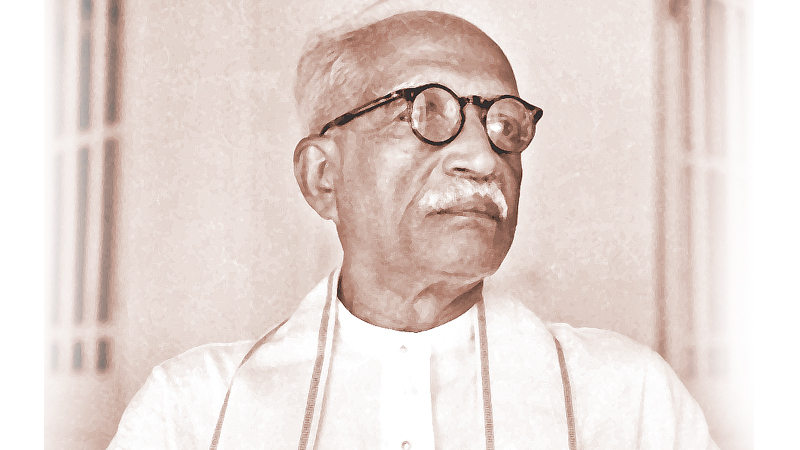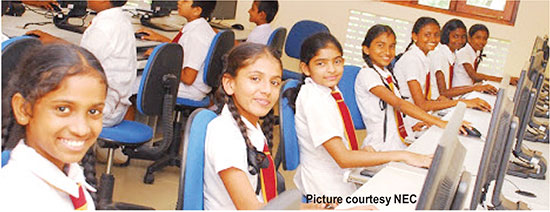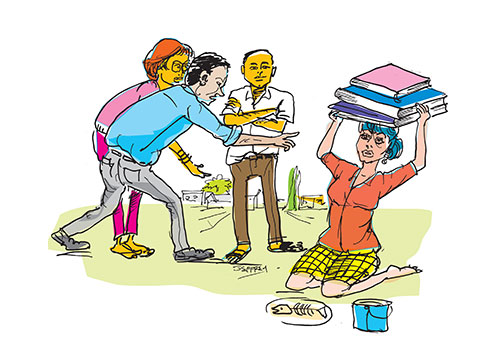Charith Dilshan’s suicide has yet again brought state universities into the spotlight over concerns of ragging. It is by now well-known that any form of ragging constitutes an offence punishable by law as per the Prohibition of Ragging and Other Forms of Violence in Educational Institutions Act, No. 20 of 1998, as well as the Torture and Other Cruel, Inhuman or Degrading Treatment or Punishment Act No. 22 of 1994. However, as Shamala Kumar lucidly argued in an earlier Kuppi Talk (March 30, 2021), extreme incidents such as suicides or particularly cruel treatment are but aggravated symptoms of a much more pervasive and entrenched culture, both within universities and in wider society. In the university space, these pathologies find expression in innumerable daily interactions between seniors and juniors, teachers and students, and men and women, among others. A targeted approach to specific incidents that does not take this broader context, and, therefore, the underlying causes into account, is bound to fail. My aim, in this piece, is to briefly assess the implications of some of the measures proposed to curb and eliminate ragging and, in greater detail, discuss the role of education to that end. I argue for making a careful distinction between an anti-ragging stance and an anti-politics one, because the latter is as damaging as the former.
Implications of proposed measures
As an immediate response to the excesses of ragging, the Ministry of Higher Education has decided to appoint to each state university a member of its Council, who will directly be in charge of ragging-related complaints, bestowed with the authority to penalise perpetrators and initiate legal action against them. The Chairman of the University Grants Commission (UGC) has endorsed the move on grounds that the personnel currently in charge of looking into ragging-related complaints lack the authority to take legal action. Both the UGC and Ministry of Higher Education are of the opinion that an officer exclusively committed to addressing ragging needs to be appointed, with sufficient powers to pursue legal action against perpetrators. This immediately begs the question as to why those currently appointed for the same purpose (such as Marshals and Wardens) cannot be further empowered so they could take legal action where necessary. It is unclear how a Council member would be uniquely equipped to respond to ragging in a way that Marshals or Wardens would not. This may, therefore, be construed as a measure to curb the autonomy of state universities in a context of centralisation of power and its usurpation from lower-level authorities.
Ragging seriously undermines the credibility of state universities as safe spaces conducive for learning. With Charith Dilshan’s case, there is a resurgence of antipathy towards state universities for not taking adequate measures to eliminate ragging, and for good reason. However, the question of resources is rarely addressed: the understaffed university space produces overworked academics who can ill afford to provide students the support structures that ragging gives them access to (especially emotional support, but also curriculum related support such as giving input for answers students compile in preparation for examinations, which student ‘kuppi’ groups have come to fill in by way of compiling answers together); there is also no qualified, dedicated cadre in adequate numbers to provide counselling for mental health issues whom students could turn to when faced with ragging. However, when malpractices, such as ragging, feed the narrative of ‘unviability’ surrounding state universities, funding is slashed, casting cause as consequence.
Responding substantively through education
Acknowledging the dangers that lurk within the broader education landscape does not mean we at state universities must close ranks against the big bad world. To do so would amount to perpetuating the evils within, very much including the toxic culture that incubates ragging. Instead, we must do the counter-intuitive: radically open up university spaces to critical scrutiny so their pathologies may be constructively engaged with, and thereby addressed. One way to do this, in fact, one way we at state universities must do this, is through changes in the formal curriculum.
When education is only about obtaining a qualification to gain an advantage in the job market, it makes sense to reduce it to a series of assessments and write off as unimportant the process of discussion and debate. One needs only clear the relevant exams to obtain the qualification, giving rise to the scramble to obtain ‘the notes’ or other access (such as through online resources) to the ‘gist of the lesson’. This is obviously problematic because when students miss out on the epiphanies generated in the process of discussions conducted over a semester, their worldviews are left unchallenged and potentially unchanged. Such an ‘untreated’ worldview lends itself well to ragging and similar practices that take existing hierarchies for granted and seek to reproduce them often in violent ways. Of course, there are other systems – such as those of many private universities – where transformative education is very much absent but so is ragging; however, this itself stems from and feeds into an apolitical culture that is deeply problematic. I tackle this question further down.
A change in how education is conceived and practiced is, therefore ,much in order. To achieve this, we could consider introducing a philosophical basis to all subjects, including STEM, touching on questions of what we know about the world (ontology), how we have come to know it (epistemology), and, therefore, the dialogic, intersubjective nature of knowledge. Such a move would lay the foundation for a gradual, collective realisation that knowledge – as much else – is a collective enterprise, deeply embedded in the social space that produces, and is produced by, it; there is no pure, immutable core to knowledge to be ‘discovered’, but rather a co-constitutive process of making sense of the world we inhabit. Framed by such a politics, knowledge will come to be understood as a social endeavour that could and should be geared towards the realisation of collective betterment. Recipients of this kind of education alone could be expected to put an end to ragging in universities by questioning the logics of domination it reproduces, while also seeking to address the issues that ragging purportedly strives to address.
In its own convoluted way, ragging tries to [violently] establish notions of community, and it is here that we must take the bull by its horns: critiquing the particular version of community ragging builds – patriarchal, heteronormative, intolerant, and violent – through both formal education and sustained critical dialogue will help avoid both traps of political apathy and violent communitarianism. Of late, an apparent trend is that students are so squeezed for time because of the multiple jobs they work that they are rarely on campus. This is also tied to increasing political apathy: politics for many is a nuisance at best, and a danger to stay away from at worst; it gets in the way of ‘productive’ time, i.e. time one may spend making a buck, or brings them into confrontation with state power which is a serious disadvantage in the long run. The consequent decline in the incidence of ragging-related violence is a positive outcome with its own negative consequences: a generation of students indifferent to the plight of the social whole, unable to appreciate their own welfare as intrinsically connected with that of others. Countering this trend is as important as countering ragging, and it requires us to tirelessly walk the fine line in between, that alone would enable the building of communities devoid of hierarchy and the violence it operationalises.
I have not historicised ragging by placing it in the context of our broader society, which has been taken up with remarkable deftness both by writers on this column (see Shamala Kumar’s piece mentioned above) and elsewhere (see Sanjayan Rajasingham’s intervention on GroundViews dated May 14, 2025). Rather, my aim in this piece has been to focus on what education can, in fact must, do to bring ragging to an end in a truly sustainable way.
Conclusion
Ragging is an issue much larger than its specific manifestations. Any measure to address it should also, therefore, go beyond simply managing the symptoms. This involves institutional remedies inextricably tied to questions of funding, as well as a fundamental shift in how we understand and engage with education. This may sound similar to the oft evoked ‘changing the culture’ argument, and in fact does have overlaps with it. The important distinction, however, is that it does not espouse an apolitical student as a substitute for the one who engages in ragging. The turn away from ragging does not and should not automatically imply a turn away from politics; it should also not imply a need to defund or increase the administrative grip on state universities. Conflating these different issues paves the way for a depoliticised, privatised higher education landscape that lacks the capacity and the will to change society for the better.
by Hasini Lecamwasam



